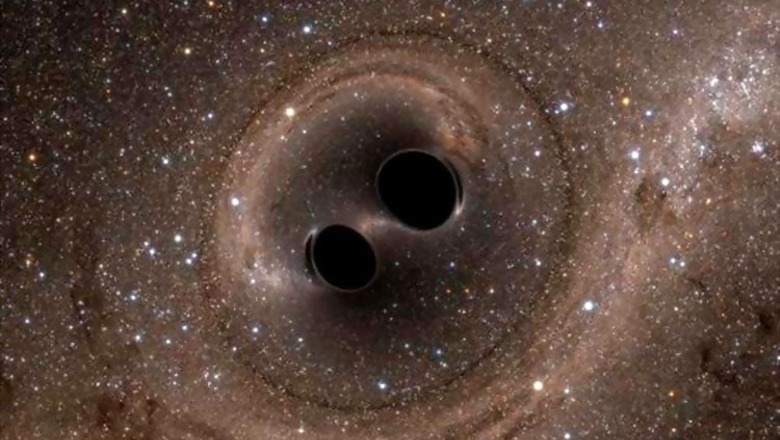
views
International scientists said Thursday they have glimpsed the first direct evidence of gravitational waves, opening a new era in astrophysics.
They team observed ripples in space-time caused by the collision of two black holes 1.3 billion light-years from Earth.
One black hole had the mass of 29 suns, the other of 36 suns; and both were probably 150 kilometers in diameter.
Their merger sent forth a wobble that hurtled through space and arrived at Earth on September 14 last year when it was picked up by sophisticated instruments, researchers announced.
The discovery proves right a prediction made by Albert Einstein a century ago, and is essential to his general theory of relativity.
"This new view of the sky will deepen our understanding of the cosmos, and lead to unexpected discoveries," said France Cordova, director of the US National Science Foundation, which funded the work.
The wobbles from gravitational waves were picked up by two US-based underground detectors,a project known as the Laser Interferometer Gravitational-wave Observatory, or LIGO.

Scientists went through the data for months and put it for peer review before making the announcement.
What are gravitational waves
Gravitational waves are caused when motion of large masses stretches the fabric of space-time -- a way of viewing space and time as a single, interweaved continuum.
It's like ripples that emanate from a pebble thrown in a pond. Except that these ones travel at the speed of light and cannot be stopped by anything.
While scientists have previously calculated gravitational waves, they had never seen one directly.Till now.
Wobbling like jelly
It looked just like physicists thought it would.
"The waveform that we can calculate based on Einstein's theory of 1916 matches exactly what we observed in 2015," David Shoemaker, the leader of the LIGO team, said.
The gravitational waves stretched and compressed space around Earth like jelly.
LIGO detectors picked up sound of the black holes colliding as a "chirp" which lasted one-fifth of a second.
The chirp "corresponded to the orbit of these two black holes getting smaller and smaller, and the speed of the two objects going faster and faster until the two became a single object," Shoemaker explained.

Underground detectors
The L-shaped LIGO detectors -- each about 1.5 kilometers long -- were conceived and built by researchers at MIT and Caltech.
One is located in Hanford, Washington, and the other is in Livingston, Louisiana.
A third detector, called VIRGO, is scheduled to open in Italy later this year.
Tuck Stebbins, head of the gravitational astrophysics laboratory at NASA's Goddard Spaceflight Center, described the detectors as the "most complex machines humans have ever built."
Why it's significant
# It's the first direct detection of gravitational waves
# It's the first direct detection of black holes
# This supports Einstein's general theory of relativity
# New data can help to explain the formation of galaxies
Scientists are excited
Eminent astrophysicist Stephen Hawking told BBC: "Gravitational waves provide a completely new way at looking at the Universe. The ability to detect them has the potential to revolutionise astronomy. This discovery is the first detection of a black hole binary system and the first observation of black holes merging."
David Reitze, executive director of LIGO told CNN:"It's the first time the universe has spoken to us through gravitational waves.Up to now we've been deaf to them."
"Humanity has now another tool for exploring the universe," Stebbins said."This is a new era in astrophysics."
( With inputs from AFP and other agencies)



















Comments
0 comment